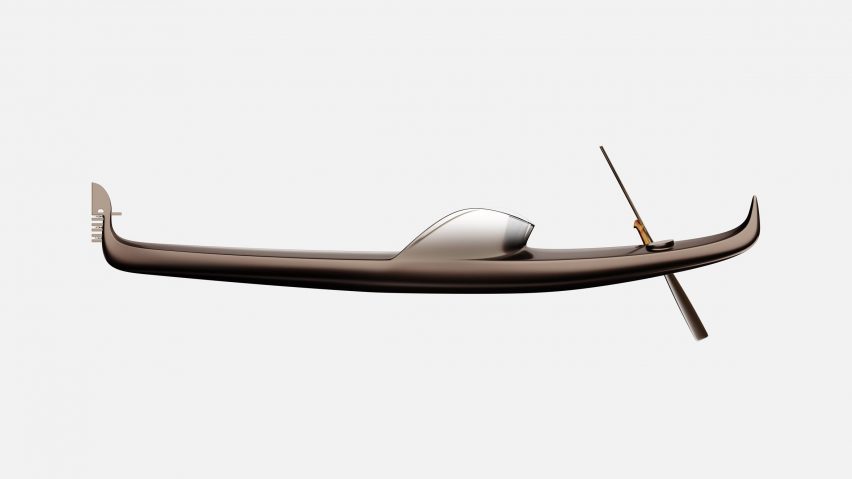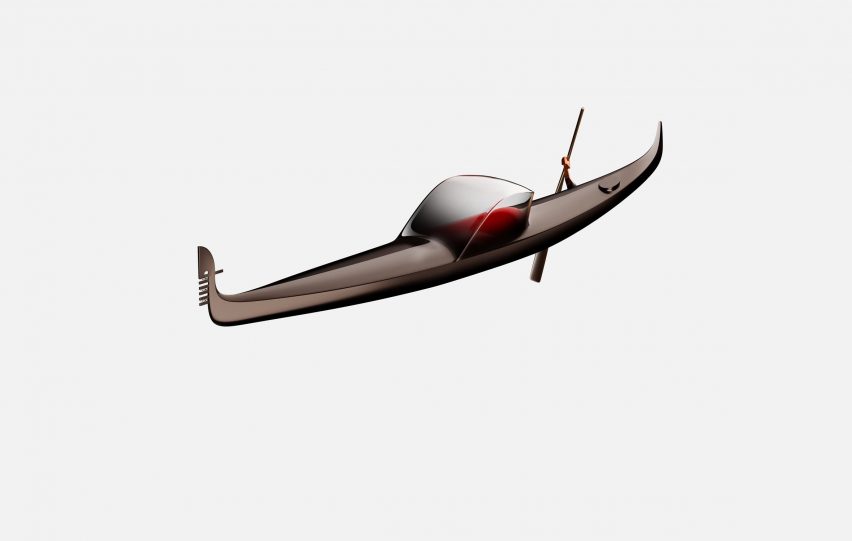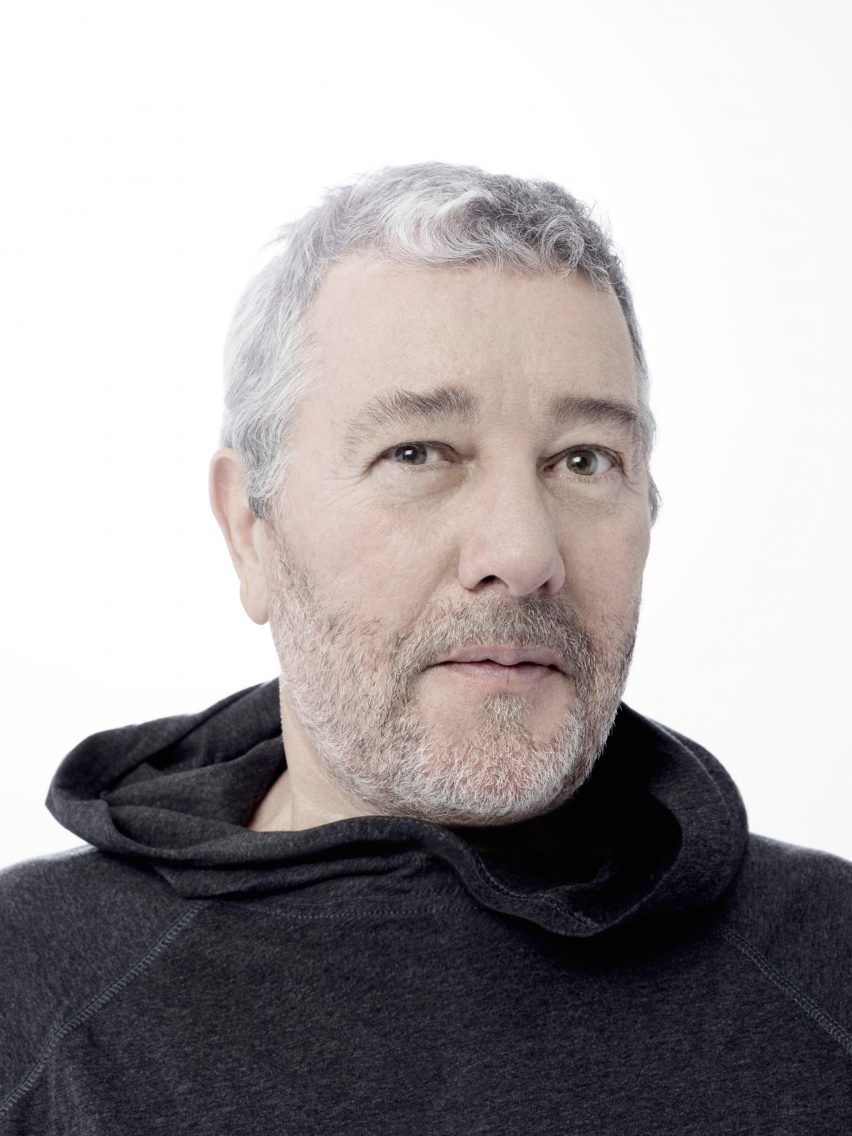
Philippe Starck envisions futuristic gondola as a "symbol for the future of Venice"
French designer Philippe Starck has designed the Dream of Winter Gondola as part of a program to encourage Venetian creatives to use design as a tool for innovation.
Named Dream of Winter Gondola, Starck's modern gondola – a traditional flat-bottomed rowing boat – was designed to "merge the identity of Italian beauty and heritage".
It was created for VeniSIA, a corporate accelerator program at Ca' Foscari University of Venice that aims to inspire students and local Venetians to pursue creative actions and strategies for innovation.
A 3D drawing of the gondola is currently being exhibited at Ca' Foscari University of Venice's Hub of Strategy Innovation.

"The gondola is a beautiful version of a dream," Starck told Dezeen. "The gondola, by its global image, is an extremely sophisticated technology."
"I have a lot of admiration and respect for the gondola, one of the most complex boats in the world as its design is completely asymmetric but nevertheless its weight is perfectly balanced and can go straight even in the hardest conditions," he added.
Starck, who has lived on the Venetian island of Burano for the past 50 years, envisioned the updated gondola being constructed from laminated compressed bamboo due to the durability and strength of the material.
"The laminated compressed bamboo is used for its extreme strength and rigidity, its absolute indifference for humidity, which means that it needs no maintenance and has a lifetime durability," he explained.

At the centre of the gondola is a small enclosed room that would allow the boat to be used during the winter months.
The boat would run on a mini electric turbine, which would be powered by solar energy and a hydro-generator. This was designed to help the gondolier power the boat with less effort, while still adhering to the sustainability requirements needed for the project.
"It is the same untouchable icon, the same iconic silhouette but washed by the time and deeply, structurally modern by the technology," said Starck.
To compensate for the natural twist at the hull of the gondola, Starck imagines that a gyroscope – a device that helps to stabilise the boat and eliminate unnecessary swaying – would be installed.
"A small gyroscope is an easy way to control the stability without adding weight," said Starck.
"This gyroscope is powered by a mixture of solar energy and a rotative turbine if the gondolier wishes," he continued. "It gives the possibility, at the same time, to propel the gondola and, when the gondola is not used, to create tidal energy."
Starck is one of the world's best-known designers. He is the first international designer invited by Balich Wonder Studio's chief creative officer Marco Balich to participate in VeniSIA's project, which is supported by the region of Veneto and the Italian Government.
Starck has used technology in many of his other designs. In 2016 he created Mi Mix, his first smartphone for Chinese electronics company Xiaomi.
He also developed a GPS-tracking wristband that allows people engaging in water sports to alert the coastal rescue of their location in an emergency.